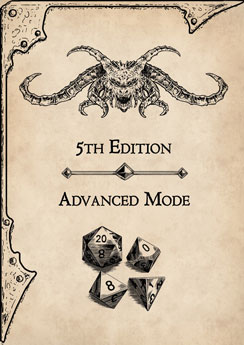Huge beast (dinosaur), unaligned
Armor Class 12 (natural armor)
Hit Points 105 (10d12 + 40)
Speed 40 ft.
Proficiency Bonus +2
Proficiency Bonus +5 (5th Edition Advanced Mode)
| STR | DEX | CON | INT | WIS | CHA |
|---|---|---|---|---|---|
| 22 (+6) | 10 (+0) | 16 (+3) | 2 (-4) | 12 (+1) | 5 (-3) |
Saving Throws Str +8
Skills Perception +3
Senses passive Perception 13
Languages –
Challenge 4 (1,100 XP)
Reactive Crest. When the Lambeosaurus is targeted by a sound-based effect or spell, it can use its reaction to make a loud, resonating call using its crest. Any creature within 30 feet that can hear the call must succeed on a DC 13 Constitution saving throw or be stunned until the end of the Lambeosaurus’s next turn.
ACTIONS
- Multiattack. The lambeosaurus make two attacks: one with its powerful legs and one with its tail.
- Stomp. Melee Weapon Attack: +8 to hit, reach 5 ft., one target. Hit: 17 (2d10 + 6) bludgeoning damage.
- Tail Whip. Melee Weapon Attack: +8 to hit, reach 10 ft., one target. Hit: 19 (3d8 + 6) bludgeoning damage.
5th Edition Advanced Mode
Limiting the power of a character and making the overall difficulty of the game harder, does not reduce the creativity, indeed it does quite the opposite.
The Game Master has the option to use any and all of the instances proposed in this guide, or just some of them according to their preference.
It is the lack of something that move and motivate characters, not the abundance of it
DESCRIPTION
The Lambeosaurus is a magnificent creature that roams the realms of D&D, easily recognized by its distinctive hollow cranial crest. This crest, varying in shape among individuals, is not just a physical hallmark but also a social tool, as it is believed to be used for communication among its kind. The Lambeosaurus is a hadrosaurid, part of a group known for their duck-billed appearance, which is well-suited to their herbivorous diet. Their size is imposing, and their presence commands attention, yet they move with a grace that belies their massive form.
COMBAT
In combat, the Lambeosaurus relies on its physical prowess. With powerful legs capable of devastating stomps and a tail that can whip through the air to deliver forceful blows, it is a formidable opponent. Despite its size, the Lambeosaurus is not typically aggressive, preferring to avoid conflict when possible. However, when threatened or protecting its herd, it will not hesitate to use its natural weapons to defend itself or its kin.
HABITAT / SOCIETY
Lambeosauruses are often found in herds, roaming the lush landscapes where food is plentiful. They prefer environments that offer both open spaces and forested areas, providing them with ample room to move and a variety of flora to feed on. Socially, they are complex creatures, with the herd structure playing a significant role in their daily lives. The bonds within a herd are strong, and they communicate with each other using a variety of sounds amplified by their crests.
ECOLOGY
As herbivores, Lambeosauruses play a crucial role in the ecology of their habitats. They aid in plant propagation through their feeding habits and serve as a vital link in the food chain. Predators may target them, but their size and strength make them a challenging prey. The Lambeosaurus’s life cycle, from hatching to maturity, is a marvel of nature, showcasing the resilience and adaptability of these ancient creatures.
